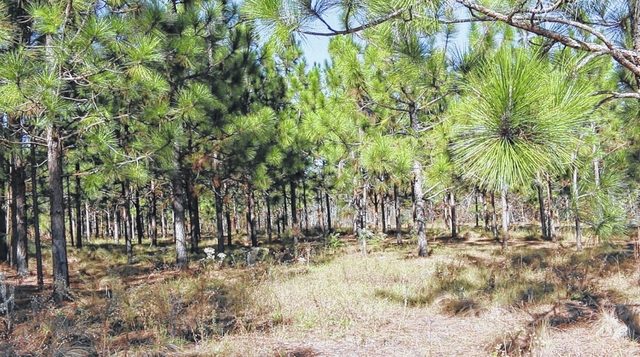COLUMBIA — There was a time when fox squirrels were abundant in South Carolina, and a Clemson Cooperative Extension Service assistant professor believes it can be that way again.
Native to South Carolina, fox squirrels have been found in the state’s forests for thousands of years. But today, urban encroachment is threatening their habitats. Corey Heaton, a member of Clemson’s Forestry and Wildlife Resources Program Team and an assistant professor in the forestry and environmental conservation department, wants to reverse the impact urban sprawl is having on the fox squirrel population.
Heaton is working with Michael Small, a wildlife biologist, and Michael Hook, Small Game Program leader, both from the South Carolina Department of Natural Resources, to restore the fox squirrel population at the Clemson Sandhill Research and Education Center (REC). If this project is successful, it could become a model for the rest of the state.
“At one time, there were a lot of pine forests and fox squirrels in (the Midlands region) of South Carolina,” Heaton said. “But, in recent years, most of the trees in this area have been cut down to make room for commercial developments.”
Many of the trees that have been removed are longleaf pine trees, the preferred habitat for fox squirrels, Small said. Cutting down these trees and not replacing them is what officials believe has led to a reduction in the state’s fox squirrel population.
“As urban centers and other developments have come in, the fox squirrels’ habitat has become fragmented and squirrel populations have become isolated,” Small said. “So we end up with these little islands of squirrel populations that are isolated and, if they are extirpated, there is no way for the squirrels to restock themselves. As with many animals, once the habitat goes, so goes the animal.”
Stands of longleaf pine trees are being planted on the Research and Education Center’s grounds to provide a habitat for fox squirrels. Heaton said plans are to release 20 to 30 adult fox squirrels at the Sandhill REC soon. This will allow researchers to determine the best methods to use in reintroducing the fox squirrel population in South Carolina.
“We will be releasing the squirrels in several different locations on the station with slightly different habitat types,” Heaton said. “This will allow us to monitor which habitat types work best for relocation efforts. If we are successful in re-establishing the population, it will allow us to provide developers with best management practices to promote fox squirrel populations.”
A date for the squirrel release will be announced, Heaton said.
If this restoration project is successful, fox squirrels will be a permanent wildlife species at the Research and Education Center.
“If this process works, it is another tool we can use on isolated pockets of habitat and as a lesson in how to affect change in development practices,” said Small, adding that habitat improvements are needed to improve the fox squirrel population across the state.
Wildlife officials have had an interest in the South Carolina fox squirrel population for several years. The Department of Natural Resources began conducting statewide sighting surveys for the fox squirrel in 1994. These surveys are conducted on even-numbered years, Small said. Personnel from the department and other agencies document each time a fox squirrel is seen, as well as additional habitat data.
The latest survey was taken in 2014 and shows a total of 718 individual fox squirrel sightings were recorded, a decrease of 312 from the 2012 survey. There also was a decrease in the number of counties reporting fox squirrels, from 28 in 2012 to 21 in 2014.
To get a better understanding of the fox squirrel population all over South Carolina, the surveys are now available online at www.dnr.sc.gov/hunting/smallgamesurvey.html. Anyone can volunteer to help with the survey.
More information about wildlife habitat improvement practices is available at www.clemson.edu/public/whip/.

